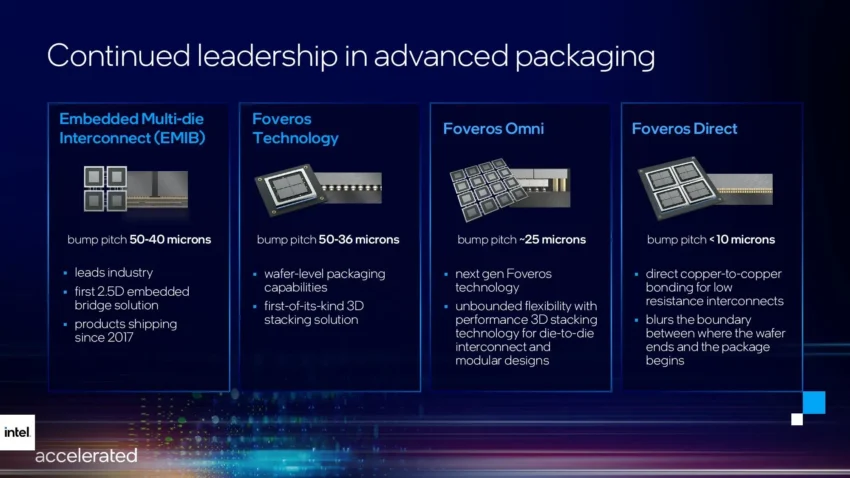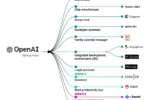Welcome to the latest edition of Embedded technologies news, where we delve into the dynamic world of embedded computing and innovative solutions shaping the future of technology. In this week’s highlights, we explore cutting-edge advancements such as silicon-proven IP acquisitions and breakthroughs in wireless data transmission that are revolutionizing embedded systems design. From generative AI’s impact on modern computing to the latest embedded solutions showcased at CES, there’s much to unpack. As the industry evolves, staying informed on these pivotal developments is crucial for engineers and developers alike. Join us as we uncover the trends and technologies that are redefining the landscape of embedded technologies.
In the realm of embedded systems, the latest updates bring exciting insights into the evolving landscape of smart technology integration and system-level innovations. Recent discussions have centered around advanced embedded computing platforms, showcasing significant strides in silicon-validated intellectual property and efficient wireless communication methods. The emergence of generative AI applications is set to transform traditional processes, paving the way for more intelligent and responsive embedded solutions. As we navigate through these advancements, it is essential to grasp how these technologies interact and enhance the capabilities of future devices. Stay tuned as we dive deeper into these topics and more, ensuring you remain at the forefront of embedded technology developments.
Latest Innovations in Embedded Technologies
In the ever-evolving landscape of embedded technologies, innovation remains at the forefront of industry advancements. Companies like Cadence are making significant strides by integrating silicon-proven IP into their offerings. This acquisition of Secure-IC is not just a business move; it enhances their portfolio with state-of-the-art solutions in areas like AI/ML and DSP, vital for modern embedded systems. With the increasing demand for robust embedded computing, these integrated solutions are paving the way for more efficient and powerful devices that can meet the challenges of today’s applications.
Furthermore, the emphasis on generative AI within embedded systems signifies a paradigm shift. As embedded solutions become more complex, the incorporation of AI technologies allows for smarter and more adaptive devices. This synergy between traditional embedded computing and cutting-edge AI technologies is expected to unlock new functionalities and performance benchmarks, driving the industry forward.
Exploring Wireless Data Transmission in Embedded Systems
Wireless data transmission is a critical component for the success of embedded systems, particularly in scenarios where traditional RF signals encounter limitations. TDK’s Acoustic Data Link technology is a prime example of overcoming these barriers. By enabling power and data transmission through metal, this innovation addresses one of the most significant challenges faced by embedded systems designers—energy loss and data degradation. Applications such as wireless sensor monitoring in pressurized vessels highlight the potential of this technology to revolutionize industries like biotech and pharmaceuticals.
The implications of effective wireless data transmission extend beyond just convenience; they play a crucial role in ensuring operational efficiency and reliability. For instance, in the context of electric vehicles, wireless safety data monitoring for batteries can significantly enhance safety protocols and diagnostics. With these advancements, the embedded industry is poised to embrace a future where wireless capabilities become standard, driving innovation and functionality across various sectors.
The Role of Generative AI in Embedded Computing
Generative AI is reshaping the landscape of embedded computing by introducing new capabilities that were once considered the realm of science fiction. The release of Syslogic’s rugged computer, RSA4NA, powered by the NVIDIA Jetson Orin Nano SoMs, exemplifies this trend. This device not only increases power consumption to unlock enhanced performance but also showcases the growing importance of AI in embedded applications. The ability to process large amounts of data in real-time opens up possibilities for complex applications such as machine learning and advanced data analysis.
Moreover, the integration of generative AI within embedded systems can lead to more intelligent decision-making processes. As devices become capable of learning from their environments and making autonomous adjustments, industries can expect increased efficiency and reduced operational costs. This evolution highlights the necessity for engineers and developers to stay informed about the latest trends and advancements in both embedded technologies and AI to harness their full potential.
Understanding Silicon-Proven IP in Embedded Solutions
Silicon-proven IP has become a cornerstone in the development of reliable embedded solutions. As companies like Cadence expand their offerings through strategic acquisitions, the focus on silicon-proven designs ensures that engineers can build upon a solid foundation of tested and verified components. This reliability is crucial for industries where safety and performance are paramount, such as automotive and aerospace.
The integration of silicon-proven IP not only accelerates the design process but also enhances the overall quality of embedded systems. By utilizing these established technologies, developers can significantly reduce risks associated with hardware failures and performance issues. This trend towards leveraging proven designs is expected to continue as the demand for more sophisticated and dependable embedded solutions grows.
Challenges and Solutions in Embedded Technology Development
As embedded technologies advance, so do the challenges associated with their development. One significant hurdle is the integration of various components into a cohesive system. With innovations such as TDK’s Acoustic Data Link, understanding how to effectively implement new technologies while mitigating issues like data degradation is crucial. Engineers must adapt their strategies to ensure that these solutions can be deployed at scale without compromising performance.
Additionally, as the complexity of embedded systems increases, so does the demand for robust testing and validation processes. Ensuring that all components function harmoniously requires rigorous testing protocols, particularly when dealing with wireless data transmission and generative AI. The industry must prioritize developing comprehensive testing frameworks to address these challenges, ensuring that embedded solutions meet the high standards expected by consumers.
The Future of Embedded Systems: Trends to Watch
The future of embedded systems is bright, with several key trends shaping its evolution. One notable trend is the increased adoption of AI and machine learning capabilities within embedded devices. As demonstrated by Syslogic’s RSA4NA, the integration of generative AI enables these systems to perform complex tasks and make intelligent decisions autonomously. This trend is likely to see wider implementation across various sectors, enhancing operational efficiencies and driving innovation.
Another trend to watch is the continued development of wireless technologies for embedded systems. As TDK’s Acoustic Data Link illustrates, there is a growing focus on overcoming traditional limitations associated with wireless data transmission. The ability to communicate through metal and in challenging environments will unlock new possibilities for applications, especially in sectors where traditional RF signals fail. These advancements will undoubtedly shape the future landscape of embedded technologies.
Embedded Solutions for the Automotive Industry
The automotive industry is experiencing a transformation with the integration of advanced embedded solutions. As vehicles become smarter and more connected, the demand for reliable embedded computing systems is higher than ever. Innovations such as silicon-proven IP and generative AI applications are driving the development of sophisticated in-vehicle systems that improve safety, efficiency, and user experience. The focus on wireless data transmission also plays a crucial role, enabling real-time communication between vehicles and infrastructure.
Moreover, with the rise of electric vehicles, embedded systems must ensure the reliability and safety of critical components like batteries. Technologies that facilitate wireless safety data monitoring can provide invaluable insights into battery health and performance, helping to prevent potential failures. As the automotive industry continues to evolve, the role of embedded solutions will be pivotal in supporting this transition.
Key Takeaways from CES: Embedded Technology Highlights
CES has always been a platform for showcasing the latest innovations in technology, and this year was no different, particularly in the realm of embedded systems. TDK’s demonstration of the Acoustic Data Link technology exemplified the potential of wireless data transmission in overcoming traditional barriers. This innovation is set to revolutionize how embedded systems operate in metal-shielded environments, paving the way for new applications across various industries.
Additionally, the focus on generative AI at CES highlighted the industry’s commitment to integrating advanced computing capabilities into embedded solutions. With products like the RSA4NA, manufacturers are demonstrating how AI can enhance performance and functionality in embedded systems. The key takeaways from CES underscore the importance of staying ahead of technological trends to leverage emerging opportunities in the embedded systems market.
Networking and Collaboration in Embedded Computing
Networking and collaboration are essential components for success in the embedded computing industry. As professionals gather at events like embedded world in Nuremberg, Germany, the exchange of ideas and expertise can lead to groundbreaking innovations. By connecting with peers and industry leaders, engineers can gain insights into the latest trends and challenges, fostering an environment of continuous improvement and growth.
Moreover, collaboration between companies can drive advancements in embedded technologies. Partnerships focused on integrating silicon-proven IP and generative AI can result in the development of more robust and sophisticated embedded solutions. By working together, organizations can share resources and knowledge, ultimately benefiting the entire industry and leading to more efficient and effective products.
Frequently Asked Questions
What recent acquisitions in embedded technologies news are shaping the silicon-proven IP market?
Cadence’s recent acquisition of Secure-IC is a significant development in embedded technologies news. This acquisition enhances Cadence’s portfolio of silicon-proven IP, which includes advanced interface, memory, AI/ML, and DSP solutions. This strategic move underscores the growing importance of comprehensive system solutions within the embedded computing landscape.
How is TDK’s Acoustic Data Link technology impacting wireless data transmission in embedded systems?
TDK’s Acoustic Data Link (ADL) technology is revolutionizing wireless data transmission by enabling communication through metal, which has been a challenge for embedded systems. This technology allows for effective wireless sensor operation and monitoring, particularly in environments where traditional RF signals fail, thus opening new avenues for embedded solutions in industries such as biotech and pharmaceuticals.
What innovations does the RSA4NA rugged computer bring to generative AI in embedded computing?
The RSA4NA rugged computer from Syslogic, featuring the NVIDIA Jetson Orin Nano SoM, unlocks new possibilities for generative AI applications in embedded computing. With enhanced power consumption capabilities and robust environmental protections, it can efficiently handle AI workloads, making it a valuable asset for developers looking to integrate advanced AI models into their embedded solutions.
What are the primary applications of TDK’s Acoustic Data Link technology in embedded systems?
TDK’s Acoustic Data Link technology has several key applications in embedded systems, including wireless sensor operation in metal-shielded environments, monitoring in pressurized vessels, RFID/NFC identification through metal walls, and safety data monitoring for EV batteries. These innovations address previous challenges in wireless data transmission, making them feasible for widespread use in embedded technologies.
Why is the acquisition of Secure-IC important for advancements in embedded technologies?
The acquisition of Secure-IC by Cadence is crucial for advancements in embedded technologies as it expands Cadence’s capabilities in delivering silicon-proven IP solutions. This acquisition allows for enhanced design services and system solutions, empowering embedded engineers and developers to create more secure and efficient applications within the ever-evolving landscape of embedded computing.
| Key Points | Details |
|---|---|
| Cadence Acquires Secure-IC | Cadence aims to enhance its silicon-proven IP portfolio including AI/ML and DSP solutions. |
| TDK’s Acoustic Data Link Technology | Wireless transmission of power and data through metal, beneficial for embedded systems. |
| Applications of TDK’s Technology | 1. Wireless sensor operation and monitoring 2. Sensor operation in pressurized vessels 3. ID identification through metal 4. Wireless safety data monitoring for EV batteries. |
| Syslogic’s RSA4NA Computer | A rugged computer using NVIDIA Jetson Orin Nano System-on-Modules with increased power for generative AI. |
| Durability of RSA4NA | IP67/IP69 rated, operates in -40 to +70 degrees Celsius, designed for shock and vibration resistance. |
Summary
Embedded technologies news continues to evolve with significant advancements this week. Cadence’s acquisition of Secure-IC strengthens its IP offerings, enhancing solutions for AI and DSP. Meanwhile, TDK’s innovative Acoustic Data Link technology promises to revolutionize wireless data transmission through metal, addressing previous challenges in embedded system designs. Additionally, Syslogic’s RSA4NA computer showcases rugged capabilities, ideal for generative AI applications, enhancing performance while ensuring durability. These developments reflect the dynamic landscape of embedded technologies, highlighting the importance of innovation and collaboration in the field.






